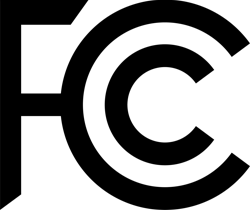
The Federal Communications Commission (FCC) on Dec. 7 announced that millions of rural Americans in 49 states and the Commonwealth of the Northern Mariana Islands will gain access to high-speed Internet service through the completed Rural Digital Opportunity Fund (RDOF) Phase I auction.
Auction results as released by the FCC show that bidders won funding to deploy high-speed broadband to over 5.2 million unserved homes and businesses, almost 99% of the locations available in the auction. Moreover, 99.7% of these locations will be receiving broadband with speeds of at least 100/20 Mbps, with an overwhelming majority (over 85%) getting gigabit-speed broadband.
CCO Holdings, LLC (Charter Communications) was assigned the most locations, just over 1.05 million. A total of 180 bidders won auction support, to be distributed over the next 10 years. A broad range of providers successfully competed in the Phase I auction, including cable operators, electric cooperatives, incumbent telephone companies, satellite companies, and fixed wireless providers.
View the results of the FCC's Rural Digital Opportunity Fund Phase I auction by state and territory, with a list of the winning bids.
The FCC noted that its structuring of the reverse auction yielded significant savings, as competitive bidding among over 300 providers yielded an allocation of $9.2 billion in support out of the $16 billion set aside for Phase I of the auction. Importantly, the $6.8 billion in potential Phase I support that was not allocated will be rolled over into the future Phase II auction, which now can draw upon a budget of up to $11.2 billion in targeting partially-served areas (and the few unserved areas that did not receive funding through Phase I).
“I’m thrilled with the incredible success of this auction, which brings welcome news to millions of unconnected rural Americans who for too long have been on the wrong side of the digital divide. They now stand to gain access to high-speed, high-quality broadband service,” said FCC Chairman Ajit Pai.
Pai continued, “We structured this innovative and groundbreaking auction to be technologically neutral and to prioritize bids for high-speed, low-latency offerings. We aimed for maximum leverage of taxpayer dollars and for networks that would meet consumers’ increasing broadband needs, and the results show that our strategy worked. This auction was the single largest step ever taken to bridge the digital divide and is another key success for the Commission in its ongoing commitment to universal service. I thank our staff for working so hard and so long to get this auction done on time, particularly during the pandemic.”
As further noted by the FCC:
The auction used a multi-round, descending clock auction format in which bidders indicated in each round whether they would commit to provide service to an area at a given performance tier and latency at the current round’s support amount. The auction was technologically neutral and open to new providers, and bidding procedures prioritized bids for higher speeds and lower latency.
The auction unleashed robust price competition that resulted in more locations being awarded at less cost to Americans who pay into the Universal Service Fund. The 5,220,833 locations assigned support in the auction had an initial reserve price of over $26 billion over the next decade; through vigorous competition among bidders, the final price tag to cover these locations is now just over $9 billion, with the vast majority of locations receiving gigabit broadband—far above the 25/3 Mbps minimum level of service that providers could bid on in the auction.
Providers must meet periodic buildout requirements that will require them to reach all assigned locations by the end of the sixth year. They are incentivized to build out to all locations as fast as possible.
The agency notes that the Rural Digital Opportunity Fund Phase I auction is part of a broader effort by the FCC to close the digital divide in rural America and focus limited universal service funds on unserved areas that most need support. In October 2020, the Commission adopted rules creating the 5G Fund for Rural America, which will distribute up to $9 billion over the next decade to bring 5G wireless broadband connectivity to unserved areas in rural America.
More information on the Rural Digital Opportunity Fund Phase I auction is available at https://www.fcc.gov/auction/904, including complete auction results and a map of winning bids.